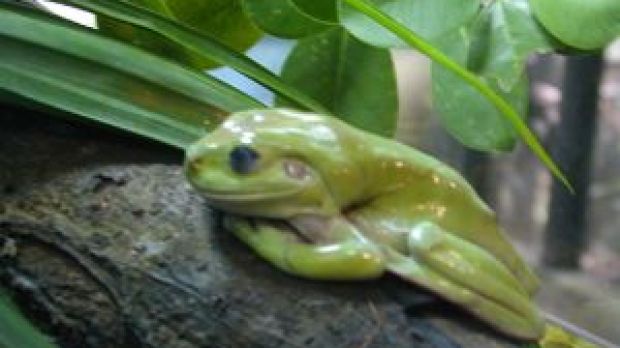Scientists at the University of Florida, Gainesville, wanted to see if wax wrapping tree frogs really do enter in a dormant stage after coating themselves with wax.
Amphibian skin offers little resistance to water loss, so amphibians that live in or near water developed either behavioral and physiological adaptations in order to avoid drought, like being nocturnal, subterranean or passing the dry season in a dormant stage.
Some tree frogs secrete fatty substances which - through elaborate wiping motions - they grease it over their entire bodies. The frogs that use this behavior belong to two distinct groups: Phyllomedusinae group living in tropical Central and Southern America, closely related to tree frogs from temperate zones and Racophoridae tree frogs from Africa and Southern Asia, more related to common pond frogs. This wax is comparable with that secreted by the cuticle of beetles and spiders.
All frog species known to wax themselves live in trees and shrubbery and in arid or semiarid areas at least in the dry season.
Species that are closely related to some waxing species living in wet environments, like rain forest, do not wax. "This self-wiping is a complex behavior involving the use of all four limbs to stroke or rub all dorsal and ventral body surfaces, including the limbs," explains Nadia A. Gomez from University of Florida.
"Thus, the animal is protected from dehydration, provided the external film of lipids is not physically disrupted by movements or other disturbance."
After waxing themselves, the frogs usually adopt a resting posture, folding their limbs tightly beneath their body and closing their eyes. (photo above)
The "waxing" and post waxing posture allows to tiger-leg monkey tree frog species, Phyllomedusa hypochondrialis, (photo bellow) from South America, to limit its surface evaporation to as little as 4 % of that from a free water surface in the same ambient. But, despite previous beliefs, the scientists did not find differences in the metabolic rate between waxed and unwaxed frogs, so the waxed frogs do not actually enter in a dormant state. Some frogs, however, presented slow decreases of metabolic rate as advanced dehydration, which suggested that a dormant behavior might be induced by a prolonged drought, probably during the dry season.
But waxing itself is not strictly linked to the dry season. "Our data do not provide strong evidence that P. hypochondrialis routinely depress metabolic rates and enter a deep dormant state during quiescent behaviors following wiping."
"Moreover, quiescent Phyllomedusa remain responsive to [the] presence of insects and eat readily."

 14 DAY TRIAL //
14 DAY TRIAL // 
